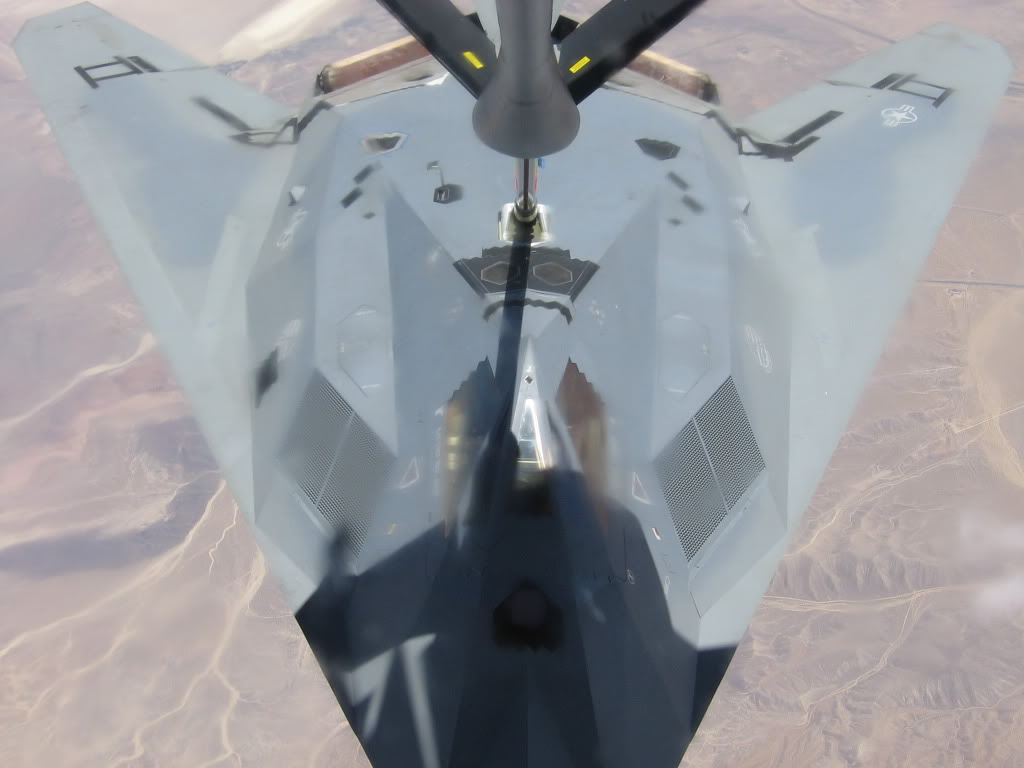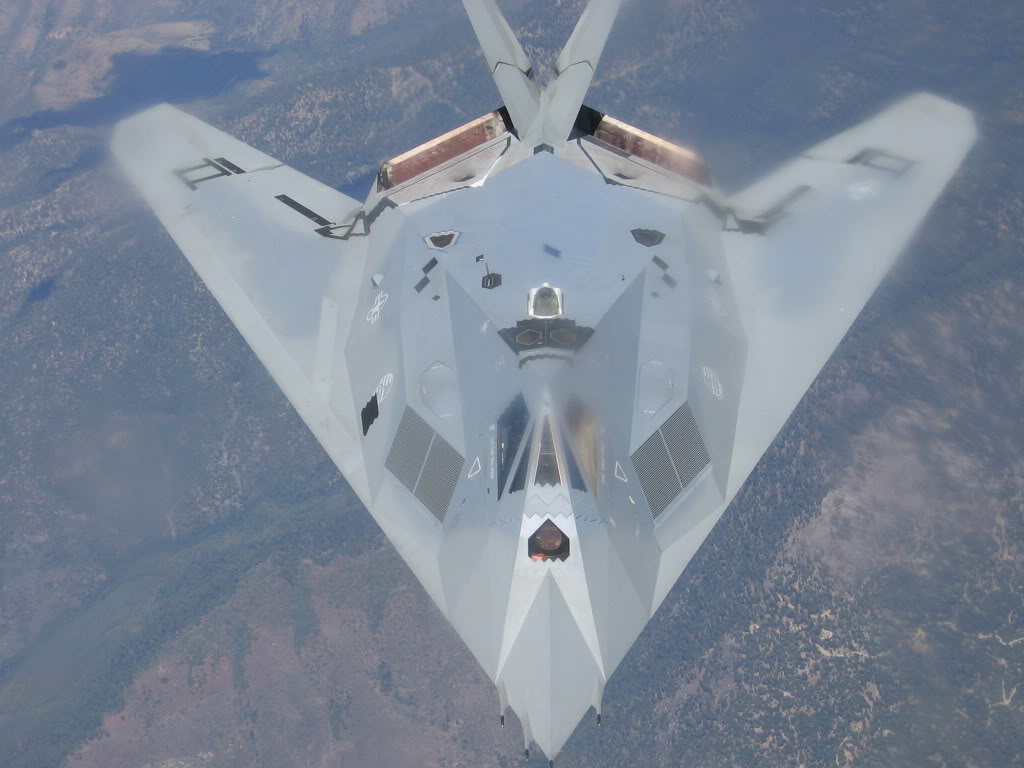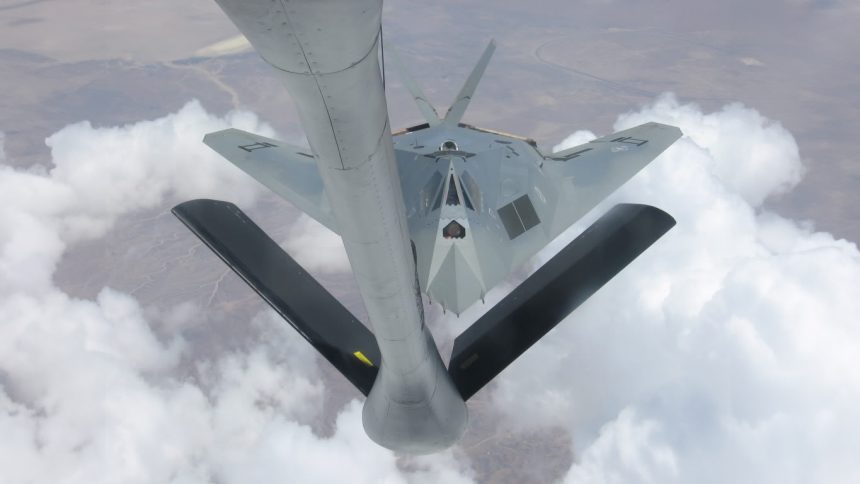Here are some interesting photographs of the gray F-117 Stealth Jet.
Taken towards the end of 2003/early 2004 by a KC-135 boom operator using the nickname “boomer135” and brought to my attention by Aviationintel’s Tyler Rogoway, the following pictures show the quite rare “Gray Dragon”, the gray F-117A Nighthawk stealth fighter.
The “Gray Dragon” represents a unique and lesser-known chapter in the legacy of this stealth attack aircraft.
This plane is in fact the only to be painted in an experimental two-tone grey color scheme. The use of gray paint is speculated to help blend with the sky more effectively, providing a different camouflage approach than the original black.
Noteworthy, when the author posted them for the first time on the ATS forum, he stated that the depicted aircraft was being flown by a (civilian) Lockheed Martin test pilot.

The “Gray Dragon” was among the first six Nighthawks that the U.S. Air Force flew for the last time from Holloman Air Force Base to Tonopah Test Range, Navada, on Mar. 12, 2007.

As many of you already know, since the last F-117 was retired in 2008, the famous stealth fighter has been “spotted” several times. Along with several sightings, there’s even a seemingly genuine video of a single triangular “black jet” flying inside the Nellis Range Complex years after retirement.








